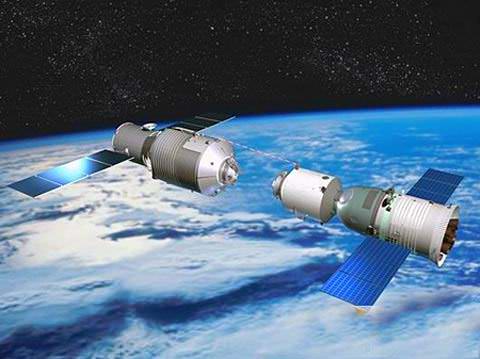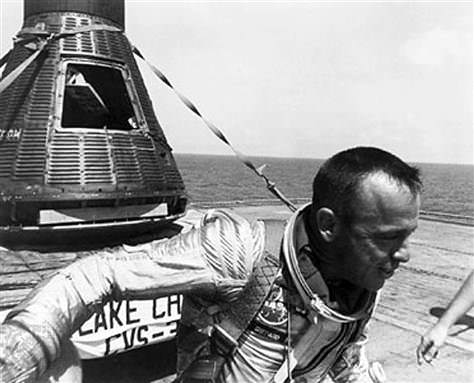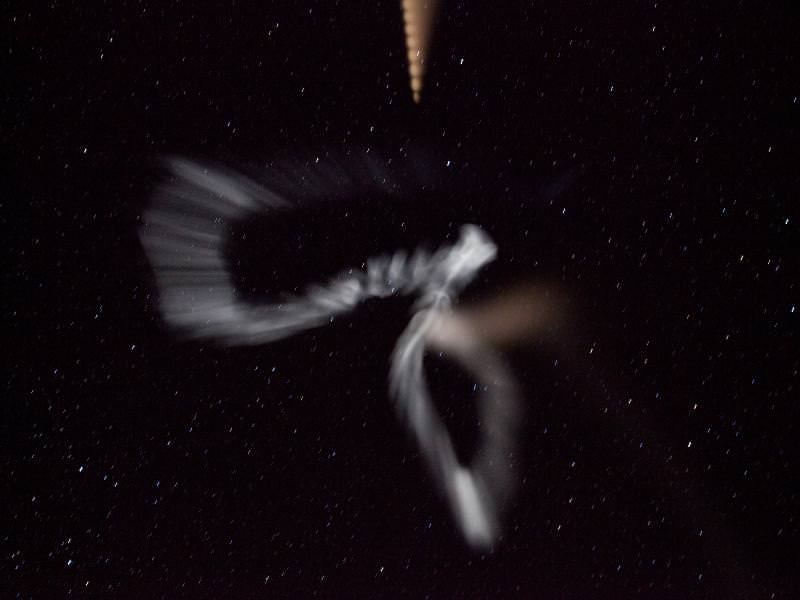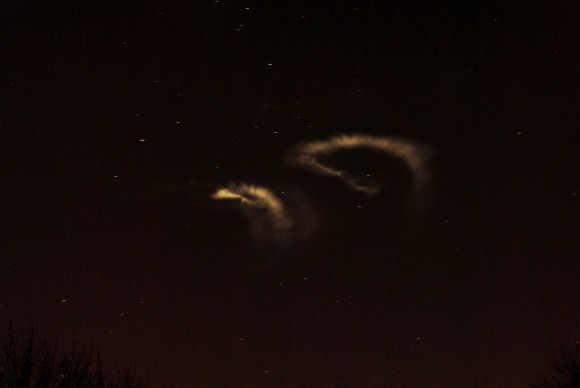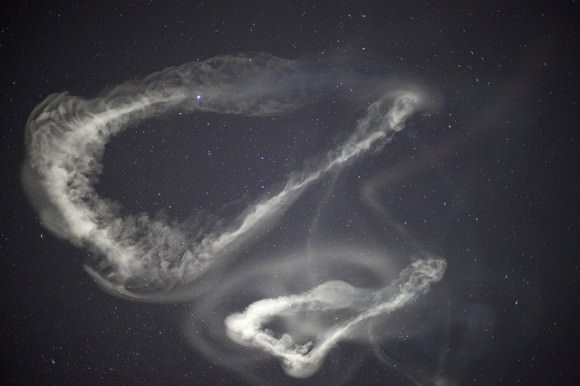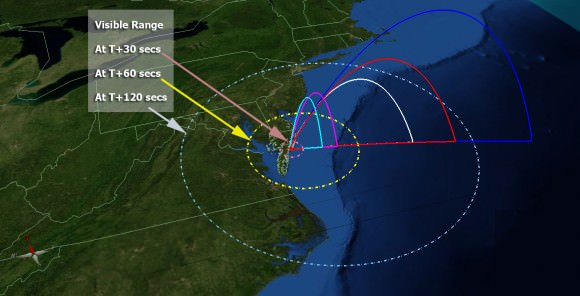Saturday was a perfect day for flying, so we went out to the 100 acres for a boosted hop. We had high expectations for success, since the vehicle had been operating perfectly on all tests so far.
After we loaded up the propellant and pressurized the vehicle, we ran into a problem. When I opened it up to 20% throttle for the warmup it looked like it cleared up fine, but the telemetry was only reading 100C, as if the hot pack hadn?t started heating. We were a long way from the vehicle, so we couldn?t really tell what was going on. I gave it a bunch of slugs of propellant until it finally started going up in temperature properly, but we had blown a lot of propellant out on the ground. Too much.
It finally reached operating temperature and we launched. We had only been operating this engine at hover thrust levels, so we had been a little concerned that it might be rough at full throttle. It was. It flew fine through the roughness, but when it started to throttle down after the two second boost to a 0.5 G positive acceleration level for the stabilization phase, the rough pulses kept passing both above and below the desired acceleration, keeping the engine from throttling down at full speed, resulting in it going a lot higher than intended (just under 600 feet high). It did finally get out of the rough stability zone into clear stabilization, but a couple seconds later, everything got quiet. It ran out of propellant.
It had not hit apogee yet, so the unstable vehicle immediately started rotating, hitting about 50 degrees / second. If the vehicle had been past apogee when it ran out, it probably would have just dropped feet first.
We had telemetry all the way to the time of impact, which matched the video perfectly, landing eight meters from the launch point. The vehicle hit the ground basically sideways, a little tail first. The bottom manway flange broke off the tank, and the 450 pound tank with 180 psi pressure still in it got punted about 200 yards away by the gas release. $35,000 of rocket is now a whole lot of primo Armadillo Aerospace Droppings. There are a few pipe fittings that survived, but that?s about it. Amazingly, even though the on-board camera was destroyed, the tape did survive with only some scuffed sections. It?s a good thing Doom 3 is selling very well?
From analyzing the telemetry (integrating the chamber pressure during the flight), it looks like it wasted two thirds of the propellant on the warmup. If it had lifted off with a normal warmup, it would have landed ok even with the rough throttling, but we would have been in violation of the 15 second burn time limit by the time it landed. There was twice as much propellant loaded as this flight should have required, which I thought was enough to cover any off-nominal conditions, but we obviously should have scrubbed when the warmup didn?t catch after the second or third try. We are going to look into getting a continuous capacitive level sensor next time so we can have a firm no-go line for liftoff. If anyone knows of a peroxide compatible (316 SS / Teflon / viton / eetc) capacitive sensor that runs off of 12v or 5v DC and can handle 300 psi (we may be willing to run past rated pressure if nexessary), let me know. Ideally we would want a 5V or 10V analog out, but we could live with a current sensor, or (with some begrudging) a serial port. We would like to mount it on the bottom of the tank instead of the conventional top location, but we don?t think that will be a problem.
The failure did give us some demonstration data that we always sort of wanted to get (but not that bad). The vehicle is absolutely, positively, NOT going to continue flying nose first when it loses active control. This should be blatantly obvious from the CG, but we had a WSMR engineer pushing us towards a NASA consultant to prove it. When it fails in the air, it just drops like a rock, landing very near the launch site. Rupturing a fiberglass tank doesn?t produce shrapnel, but it does drop kick the tank pretty good. This looked pretty close to an optimal 45 degree launch angle for the tank, so we have a pretty good idea what our safe distances should be.
We probably would have been able to save the vehicle if we had a rocket drawn parachute on board, but we are trying to have a pyro-free vehicle. A pneumatic drogue cannon might have been able to deploy a chute fast enough, but it would be a lot more debatable.
We cut the engine open with the plasma cutter to do a post-mortem, and found what had been causing the engine issues. The combination of the bottom catalyst retaining plate bowing down because it was only welded on the bottom and some catalyst escaping both out the bottom and some out the top (the top screen was burned through in a couple places) left the bottom catalyst not even completely covering the diameter of the engine. When we had the nozzle and cold pack cut off and the engine on its side, you could see right through the hot pack at the top. This explains the apparently clear exhaust at the start while the thermocouple was still reading only 100C, because the thermocouple was fairly short (we used to use a longer one, but the bowing of the retaining plate forced us to use a shorter one so we could still insert it) so it was in a stream around the edges that bypassed most or all of the hot pack catalyst (driving down the highway probably also settled the catalyst on the opposite side from the sensors), while much of the main flow was still being burned. The loosening catalyst is also almost certainly why this engine ?got rough? after we had been using it for a while.
The support plate bowing can be fixed by either making a full depth angle on the sides of the plate so the weld gets full side coverage, or actually weld the plate between two chamber sections, instead of inside a single chamber section. We are making new plates that are made with 1300 quarter inch holes instead of large water jet cut squares that are bridged by screens. This will let us completely avoid the screens altogether, and we are also going to tie the top and bottom plates around the hot pack together by putting quarter inch bolts through some of the quarter inch holes, and welding them together as a unit with the catalyst in between. This should fix the engine behavior.
Everything else operated perfectly, so we still feel good about the general configuration, but we have a number of improvements for robustness and operability that we will be making in the next vehicle we put together. A couple of the necessary items are fairly long lead times, so we are probably grounded for five weeks.
Original Source: Armadillo Aerospace Status Report
